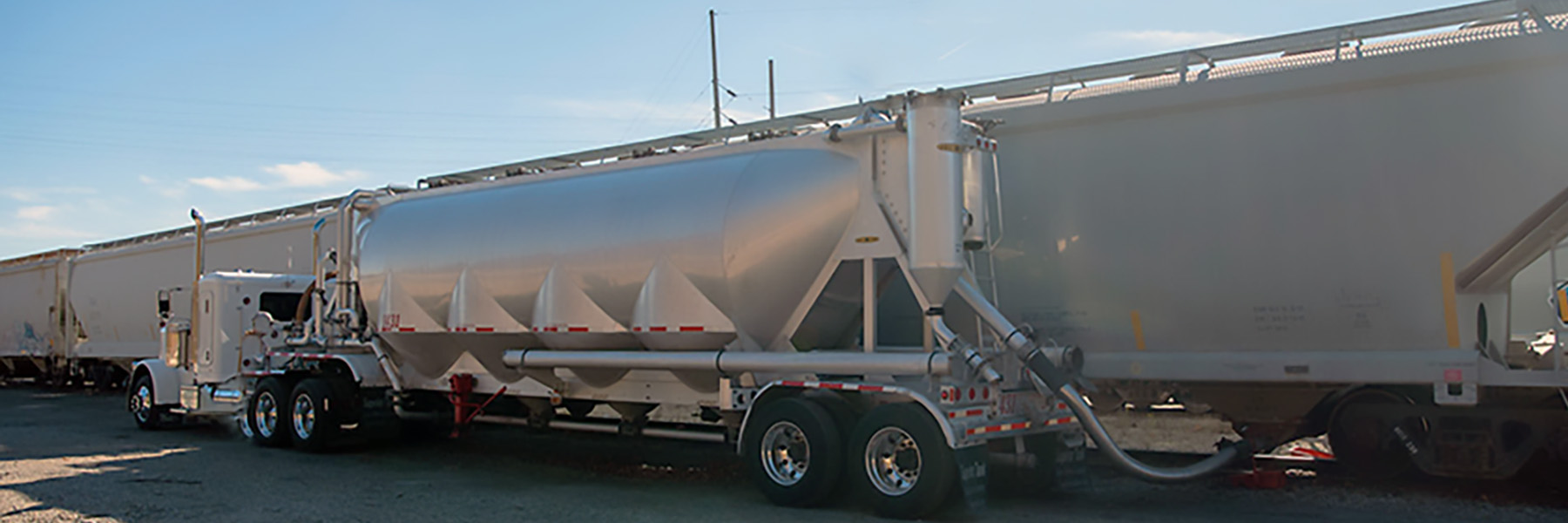
As a company that has a rail spur on site to transload, store, and transport dry bulk plastic resin, we understand the importance of rail transportation. Within our Transportation Management division, we also understand the value of rail when brokering freight. Rail is often a part—and usually an integral part—of both transloading and intermodal transportation. What are the advantages of using transloading and intermodal transportation, particularly when rail is one of the modes used?
What Is Intermodal Transportation?
Intermodal means using more than one mode of transportation. Intermodal transportation is when goods are moved in their entirety using two or more modes of transportation without handling individual components of the freight from mode to mode. Traditional intermodal transportation simply involves moving an entire container (usually a large metal shipping container, sometimes referred to as an intermodal container) from one type of transportation to another.
What Is Transloading?
Transloading also involves moving freight from one mode of transportation to another. The distinction is usually drawn between intermodal and transloading because in transloading, freight is transferred from one container to another. We use pneumatic conveyance to directly transfer dry bulk plastic resin from covered hopper cars to pneumatic trailers (dry bulk tankers). Sometimes freight is moved via intermodal transportation for part of a trip and then transloaded (and vice-versa).
What Are the Advantages of Using Transloading and/or Intermodal Transportation?
1. Supply Chain Resiliency
Using transloading or intermodal transportation provides flexibility, reliability, and can make your supply chain more resilient. Shipments are not restricted to one mode, but are moved based on the methods that are most efficient. Rail can handle freight across volumes and can accommodate oversize cargo with ease. Moreover, shipments moving through the U.S. that include rail are utilizing one of the most effective and reliable modes of transporting cargo. On the American Society of Civil Engineers (ASCE) recent report card, America’s rail system received a B-minus grade. Only ports received a higher grade (B).1 Additionally, rail is far less likely to experience congestion. Freight shipped via rail for the longest portions of its transit is more likely to proceed unimpeded than freight that solely travels in trucks, for instance.
2. Cost Savings
Transloading and intermodal transportation that includes rail will involve cost savings, as rail is one of the least expensive methods of shipping freight. Using long-haul transportation via rail rather than truck greatly reduces fuel expenses. Trucks can be maximized for use for shorter hauls, further lowering fuel expenses.
3. Improved Sustainability
Shipping by rail, in particular, is an attractive solution as it releases fewer greenhouse gases per ton mile. Rail cars can carry quite a bit more cargo than trucks, as well. While shipments by rail can carry product for the longest portion of a trip, multiple individual trucks can receive product from one rail car and go to their separate local or regional destinations where movement by rail would be impossible or less practical.
4. Expanded Reach
Transloading and intermodal transportation provide businesses with access to more markets—including international and destinations in remote areas. Logistics companies that manage shipments via a combination of truck, rail, and ocean/air transport can get the product where it needs to be at the most competitive prices and in the most efficient manners.
Conclusion
Both transloading and intermodal transportation present strategic solutions for businesses looking to maximize the resiliency of their supply chains, optimize costs, enhance sustainability, and expand their reach. By leveraging multiple modes of transportation, companies can achieve greater flexibility, reliability, cost-savings, and access to additional markets, while reducing their environmental footprint. Transloading and intermodal transportation are valuable, cost-saving solutions for businesses shipping bulk quantities domestically and internationally, especially if they heavily involve rail.
Contact Us
Contact ASW if you want to learn more about our transloading services or our freight brokerage services using intermodal transportation.
1 “U.S. Ports and Rail Improvements Rated Best in Gloomy Infrastructure Report Card,” Supply Chain Brain, March 25, 2025, https://www.supplychainbrain.com/articles/41428-us-ports-and-rail-shine-in-asce-infrastructure-report-card.
